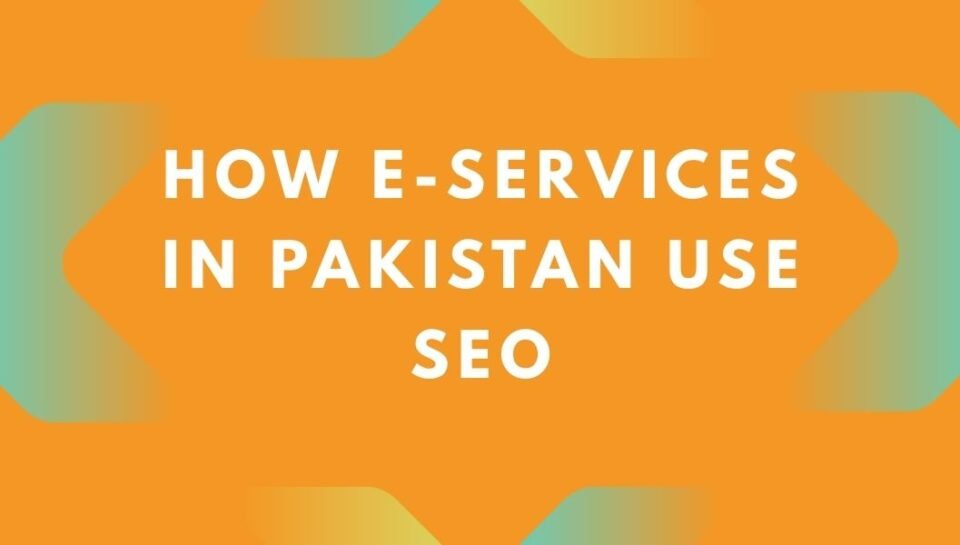
What Are E‑Services in Pakistan?
E‑services are government and regulated private services delivered online. In Pakistan, they commonly include:
- Identity and documentation: NADRA online CNIC tracking, smart card renewal, passport renewal guidance
- Tax and compliance: FBR Iris income tax return filing, NTN verification, sales tax registration
- Business services: SECP company incorporation, name reservation, annual filings
- Transport and licensing: Driving license renewal, learner license online, excise and taxation token tax payment, vehicle verification
- Citizen facilitation: Pakistan Citizen Portal, provincial e‑Khidmat centers, domicile certificate, character certificate
- Telecom and utilities: PTA IMEI check (DIRBS), e‑challan payment, electricity and gas bill payment online
- Education and professional bodies: HEC e‑portal, PEC/PMDC online verification, PPSC “apply online”
These are mission-driven services. Users come with specific intents—renew, register, verify, pay, track—and SEO aligns portals with those intents so citizens get to the right page, fast.
Why SEO Matters for E‑Services in Pakistan
- Discoverability: People search “token tax online Lahore” or “FBR Iris login Pakistan”—if your page doesn’t appear, the service effectively “doesn’t exist.”
- Clarity: Optimized content answers eligibility, documents required, fees, and timelines, reducing confusion and repeat visits.
- Cost efficiency: Lower call-center load and fewer in-person visits mean measurable savings for departments and better citizen experience.
- Trust and compliance: Clear, up-to-date, secure pages with official branding and schema build confidence.
- Accessibility: SEO techniques (structured headings, alt text, readable language) improve usability for all, including low-bandwidth users.
Search Behavior in Pakistan: Insights That Shape Strategy
- Mobile-first: The majority of sessions are mobile; Core Web Vitals and lightweight pages are non-negotiable.
- Multilingual queries: Users search in English, Urdu, and Roman Urdu (e.g., “CNIC tajdeed online” or “online tax file Pakistan”).
- Intent-driven phrases: “How to renew CNIC,” “FBR filer banne ka tareeqa,” “SECP company registration steps.”
- Seasonality: Spikes during tax season, admissions cycles, licensing drives, or policy changes.
- Local nuance: City/province modifiers appear often—“ePay Punjab token tax,” “Sindh excise vehicle verification,” “KP learner license online.”
The Core SEO Pillars for Pakistani E‑Services
1) On‑Page Content Optimization That Mirrors Citizen Journeys
Service pages should follow a consistent, citizen-centric template:
- Service summary: What the service does, who it’s for (e.g., Pakistani citizens, overseas Pakistanis, businesses)
- Eligibility and prerequisites: Age, documents required, prior registrations
- Fees and timelines: Costs, processing time, validity, late fees
- Step-by-step process: Online application steps, screenshots, and links to forms
- Payment methods: e‑payment through Raast, ePay Punjab, JazzCash, Easypaisa, bank cards
- Support: Helpline, email, chat, service centers with Google Map links
- FAQs: Address common issues (“I forgot my Iris password,” “IMEI status shows blocked”)
- Updates and notices: New rules, system outages, timelines
Content should be available in English and Urdu (and where possible, Urdu transliteration and regional languages). Keep reading levels clear and concise, and include screenshots or short videos with captions to enhance comprehension on mobile.
2) Technical SEO That Makes Portals Fast, Crawlable, and Resilient
- Core Web Vitals: Optimize LCP, CLS, INP; compress images; defer non-critical JS; prioritize critical CSS
- Mobile UX: Responsive layouts, readable font sizes, large tap targets, offline-friendly hints where feasible
- Information architecture: Flat, logical paths (e.g., /services/tax/file-return/), breadcrumb navigation, and robust internal linking
- Sitemaps and indexation: XML sitemaps segmented by content type; avoid indexing session-based or faceted URLs
- Canonical tags: Prevent duplicate content across provincial mirrors/subdomains
- Hreflang: Implement for English/Urdu variants to match user language preferences
- PDF strategy: Convert heavy PDF guides to HTML pages; if PDFs are necessary, add HTML summaries and compressed, tagged PDFs
- Security and trust: HTTPS, HSTS, updated TLS; clear ownership, privacy, and data handling policies
3) Structured Data and SERP Features
Schema markup helps Google understand and feature your content:
- GovernmentService or Service: Describe public services, including area served
- HowTo and FAQPage: Earn rich results for process steps and common questions
- Organization, WebSite, and BreadcrumbList: Improve entity recognition and sitelinks
- VideoObject: For explainer videos on filing, renewal, or verification steps
- LocalBusiness/AdministrativeArea: For physical service centers or e‑Khidmat offices
These elements can unlock features like rich snippets, People Also Ask visibility, and sitelinks search boxes, guiding citizens directly to the right step.
4) Local and Multilingual SEO for Provincial and City-Level Discoverability
- Service-area pages: Separate pages for Punjab, Sindh, Khyber Pakhtunkhwa, Balochistan, AJK, and GB, with local procedures and fees
- Google Business Profile: Verified listings for service centers, accurate hours, holiday notices, and UTM-tagged links to online services
- Language targeting: Urdu and English versions with hreflang; incorporate natural Roman Urdu phrases within content and FAQs
- Examples of intent-driven keywords:
- “token tax online Lahore/Karachi”
- “FBR Iris login Pakistan”
- “NADRA CNIC renewal online”
- “SECP company registration Pakistan steps”
- “PTA IMEI check DIRBS verify device”
- “driving license renewal Punjab eKhidmat”
5) Content Design for Trust and E‑E‑A‑T
- Clear ownership: .gov.pk or official domains, department logos, and verified social profiles
- Authoritativeness: Cite relevant laws, notifications, and official circulars
- Freshness: Last updated dates and version history on policy pages
- Help and appeals: Transparent contact details, grievance redressal mechanisms
- Privacy and security: Data retention policies, cookies disclosure, two-factor authentication guidance
6) Analytics and Measurement
- GA4 + Search Console: Track organic sessions, search queries, and device breakdowns
- Event tracking: “Apply Now” clicks, form starts/completions, document downloads, chatbot interactions
- Funnel analysis: Identify drop-offs at login, OTP entry, or payment stages
- Call deflection: Measure reductions in helpline calls correlated with content updates
- Dashboards: Role-specific views for communications teams, IT, and policy makers
Real‑World Examples: How Popular E‑Services Align with SEO
These examples illustrate typical queries and optimization tactics used by Pakistani e‑services:
- NADRA CNIC renewal: Queries like “smart id card renewal online Pakistan” and “NADRA tracking” map to a HowTo page with step-by-step instructions, fees, and a direct “Apply Now” CTA. FAQ rich results answer document and photo requirements.
- FBR Iris return filing: “How to file income tax return Pakistan,” “Iris login,” and “become filer Pakistan” lead to a process guide with screenshots, deadline notices, and a glossary (e.g., ATL, withholding statements) to simplify jargon.
- SECP company registration: “Company incorporation Pakistan steps” and “SECP name reservation” match a multi-step guide with timelines and fee tables, plus HowTo schema and a checklist download.
- ePay Punjab token tax: “Token tax online Punjab/Lahore” connects to a concise page explaining payment, verification, and acceptable methods (Raast, cards, mobile wallets), optimized for mobile and low bandwidth.
- PTA DIRBS IMEI check: “IMEI verification Pakistan,” “phone status PTA” land on a single-purpose page with a fast lookup tool, device status explanations, and a scannable FAQ.
- Driving license renewal (provincial): “Driving license renewal Punjab/Sindh” surface state-specific pages covering fees, medical requirements, and appointment booking, with Local SEO for e‑Khidmat center listings.
As a Pakistan-based SEO agency, NB Disruptors has seen that the most effective portals treat every high-intent query as a “task to be completed,” then design content and UX to remove friction at each step.
Programmatic SEO for Large Service Catalogs
Departments offering dozens or hundreds of services can use programmatic SEO to scale:
- Structured data model: Define fields like service name, eligibility, fees, documents, processing time, location, and last updated date
- Template-driven pages: Auto-generate consistent, accessible pages for each service and location
- Dynamic FAQs: Populate common questions from a central knowledge base
- Automated sitemaps: Keep Google informed as new services or locations are added
- Change logs: Surface recent updates to build trust and re‑index quickly
Common SEO Challenges in Pakistan’s E‑Services (and How to Fix Them)
- Duplicate content across mirrors/subdomains
- Fix: Canonical tags, content deduplication, and a single source of truth for each service
- Heavy PDFs or image-only guides
- Fix: Convert to HTML, compress, add alt text, and provide summaries with jump links
- Language fragmentation (English only)
- Fix: Publish Urdu versions and include Roman Urdu terms in FAQs where suitable
- Indexing of staging or test environments
- Fix: Password-protect, disallow via robots, and noindex staging URLs
- Session-based or parameterized URLs
- Fix: Clean URL structures, set canonical URLs, and configure URL parameters in Search Console
- Slow mobile performance
- Fix: Optimize CWV, lazy-load media, use CDN, and preconnect to critical endpoints
- Outdated information after policy changes
- Fix: Content SLAs, editorial ownership, and automated “last updated” flags
- Weak internal search
- Fix: Schema-powered site search, synonyms for Roman Urdu and English, and auto-suggest for popular services
SEO Checklist for Launching or Upgrading an E‑Service Portal
- Map search intent to services: Build a keyword universe across English, Urdu, and Roman Urdu
- Design a service template: Summary, eligibility, fees, steps, FAQs, support
- Structure the site: Logical taxonomy, breadcrumbs, and cross-linking between related services
- Implement schema: GovernmentService, HowTo, FAQPage, Organization, BreadcrumbList
- Optimize mobile performance: Achieve good Core Web Vitals on 3G/4G
- Localize pages: Province/city variants with hreflang and service-area details
- Publish bilingual content: English and Urdu; add Roman Urdu phrases in FAQs judiciously
- Harden security: HTTPS, HSTS, CSP, updated certificates, and visible trust signals
- Measure what matters: GA4 events for “Apply,” “Login,” “Payment,” “Download,” and chatbot usage
- Create feedback loops: Track search queries, PAA topics, and helpline FAQs to update content
- Maintain freshness: Content governance calendar, versioning, and public change logs
- Promote ethically: Use social media and verified profiles to drive awareness without confusing lookalike pages
Data and Trends That Reinforce SEO’s Role
- High mobile adoption: A majority of internet usage in Pakistan is mobile; citizens expect fast, lightweight pages
- Growing broadband: The country counts well over 100 million broadband subscriptions, expanding the reachable audience via search
- Voice and natural-language search: “Kaise file karun tax online?” and similar queries are increasingly common
- Digital payments: Raast, mobile wallets, and online banking reduce friction—SEO must connect users to the right payment steps
Together, these trends make SEO an ongoing operational requirement—not a one-time project.
Content and Keyword Strategy: Using Semantic and LSI Keywords Naturally
Rather than stuffing keywords, cluster them around tasks and entities:
- Identity cluster: “NADRA online,” “CNIC renewal,” “smart card Pakistan,” “track ID,” “NADRA fee”
- Tax cluster: “FBR Iris login,” “file income tax return Pakistan,” “NTN verification,” “ATL status,” “withholding statements”
- Business cluster: “SECP eServices,” “company registration Pakistan,” “name reservation,” “annual filing”
- Transport cluster: “token tax online,” “excise and taxation Punjab/Sindh,” “vehicle verification,” “driving license renewal”
- Telecom and utilities: “PTA IMEI check DIRBS,” “mobile registration PTA,” “e‑challan payment online”
Interlink these clusters thoughtfully so users (and search engines) can navigate from high-level guides to specific provincial procedures and forms.
Future of SEO for E‑Services in Pakistan
- Conversational search and AI overviews: Clear, structured content and schema will be essential to surface authoritative answers
- Task-completion design: Search results will increasingly reward pages that help users complete tasks end-to-end
- Open data and APIs: Machine-readable service catalogs and status endpoints can power richer search experiences
- Voice and chat interfaces: Urdu and Roman Urdu-optimized content will improve voice assistant responses and in-site chatbots
- Trust signals: Verified entities, cryptographic assurances, and transparent privacy standards will influence click-through and completion
Mini Case Blueprint: Optimizing a “Driving License Renewal” Page
- URL: /services/driving-license/renewal-punjab/
- H1: Driving License Renewal in Punjab – Online and In‑Person Process
- Intro: Who qualifies, validity, and quick summary of steps
- HowTo steps: Online appointment, documents upload, fee payment, verification, card dispatch
- Fees table: Standard and urgent processing, late fees
- FAQs: “What if my CNIC is expired?” “Do I need a medical?” “How long does delivery take?”
- Local details: Service centers with Google Map links and accessible timings
- Schema: GovernmentService + HowTo + FAQPage + BreadcrumbList
- Performance: Compressed images, inline critical CSS, deferred scripts
- Analytics: Track clicks on “Book Appointment,” “Pay Fee,” and “Download Form”
Practical Tips to Win Featured Snippets and PAA
- Answer first: Provide a direct, 40–60 word answer before elaboration
- Use lists and tables: For steps, fees, and document checklists
- Name entities consistently: “FBR Iris,” “SECP eServices,” “ePay Punjab,” “PTA DIRBS”
- Address Roman Urdu: Include natural variants in FAQs (e.g., “filer kaise banayen?”) without overuse
- Refresh periodically: Update timestamps; Google favors fresh guidance for time-sensitive services
Conclusion
SEO is the connective tissue between Pakistan’s citizens and the e‑services designed to serve them. By aligning pages with real search intent, structuring information for clarity, ensuring fast mobile performance, and building trust through transparent, up-to-date content, public portals can transform search into a reliable front door for everything from CNIC renewal to tax filing and company registration. As adoption of digital services accelerates, the organizations that bake SEO into their service design and governance will deliver faster, clearer, and more inclusive experiences—reducing friction for users and unlocking meaningful efficiencies for the state.




